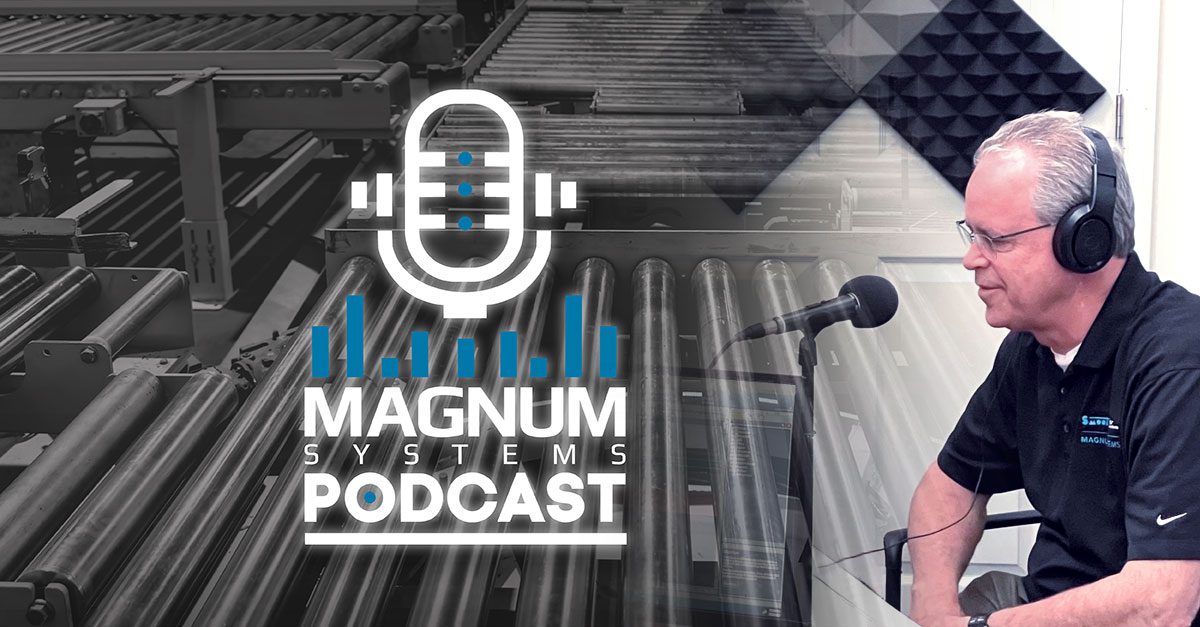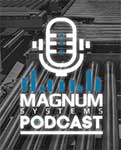

In a recent podcast, we were fortunate to have Dave Wollenberg as our guest, a veteran with over two decades of experience at Magnum Systems and an expert in pneumatic conveying. As a test lab specialist, Dave shared insightful inputs on the features, benefits and considerations around pneumatic conveying, a method far more versatile than it's typically perceived to be.
More specifically, Dave discusses practical strategies for optimizing operations, reducing failures, increasing efficiencies and enhancing workplace safety.
Pneumatic Conveying 101
Simply put, pneumatic conveying refers to the process of moving materials in a closed pipeline using air. The system choice depends on the desired outcome with two main types - dilute or dense phase - both feasible under pressure or vacuum. The nature of the product being conveyed significantly influences this decision. For instance, if the aim is to minimize damage to the conveying system or the material itself, dense phase conveying would be the first choice. On the other hand, the selection between dilute phase pressure and vacuum depends on the system requirements.
A Closer Look at the Features and Benefits
Dave, a test lab specialist at Magnum Systems, explained that pneumatic conveying systems offer several advantages over traditional mechanical systems, including:
System Design: Key Factors
Pneumatic conveying systems are designed to factor in the product characteristics, energy efficiency, ease of installation and maintenance. The choice between pressure and vacuum systems impacts both the energy efficiency and the ability to deliver or pick up the product from multiple points. Its versatility allows for ease of installation, even around existing equipment, and it also caters to the ease of maintenance due to its relatively fewer moving components. The simplicity, flexibility and efficiency of pneumatic conveying systems could revolutionize operations in many manufacturing plants.
Many manufacturers are drawn to the potential for cost savings. Not only can these systems reduce labor costs, but they can also lead to savings in material costs through bulk purchasing. This is essential in today's economic climate, where businesses continually look for ways to optimize operations and reduce expenses.
Pneumatic conveying systems also allow the ability to control the environment within the conveyance pipeline. This feature can significantly improve product quality and safety – two critical factors in the manufacturing industry.
Environmental Impact and Safety
Another significant advantage of pneumatic conveying is the ability to control the environment inside the system. This helps in maintaining sanitation, improving housekeeping and reducing cleanup time. Since the material is not exposed to the outer atmosphere, it enhances product quality by preventing exposure to external humidity or other potentially harmful elements. The enclosed nature of pneumatic conveying systems also improves safety, as it can contain accidental explosions within the pipeline, reducing the risk of widespread damage.
Energy Efficiency and Flexibility
Dave further explains how pneumatic systems can save energy over other mechanical systems, especially for long-distance conveying. They also provide high uptime due to fewer components, significantly benefiting businesses. If one part fails, the system can continue operating with the remaining components, ensuring a constant cash flow for the company.
Pneumatic conveying systems offer a high level of flexibility in terms of design, specific to customer needs and even potential future requirements. By controlling the environment within the system, they ensure product integrity and plant safety. Furthermore, they reduce labor and have the potential to decrease bulk ingredient pricing, making them an excellent choice for businesses looking for a versatile, secure and cost-effective conveying solution.
Listen to Dave's podcast episode.


RELATED POSTS
Magnum Systems: Past, Present and Future
Special Project Manager Shares Common and Doozy Pneumatic Conveying Challenges
You're Not Going to Fill a Juice Glass with a Fire Hose
Packaging Powder, Pellets and Flakes: How Not to Blow It
Automated Packaging Lines: Wringing Out Every Ounce
Related Post
Why Use a Single-Source Systems Integrator Like Magnum Systems?
What Are the Advantages of Dense-Phase Pneumatic Conveying?
Mastering Integration in Manufacturing with Magnum Systems: A Deep Dive Podcast Episode
The Secrets of Valve Bag Sealing: Expert Insights from Magnum Systems